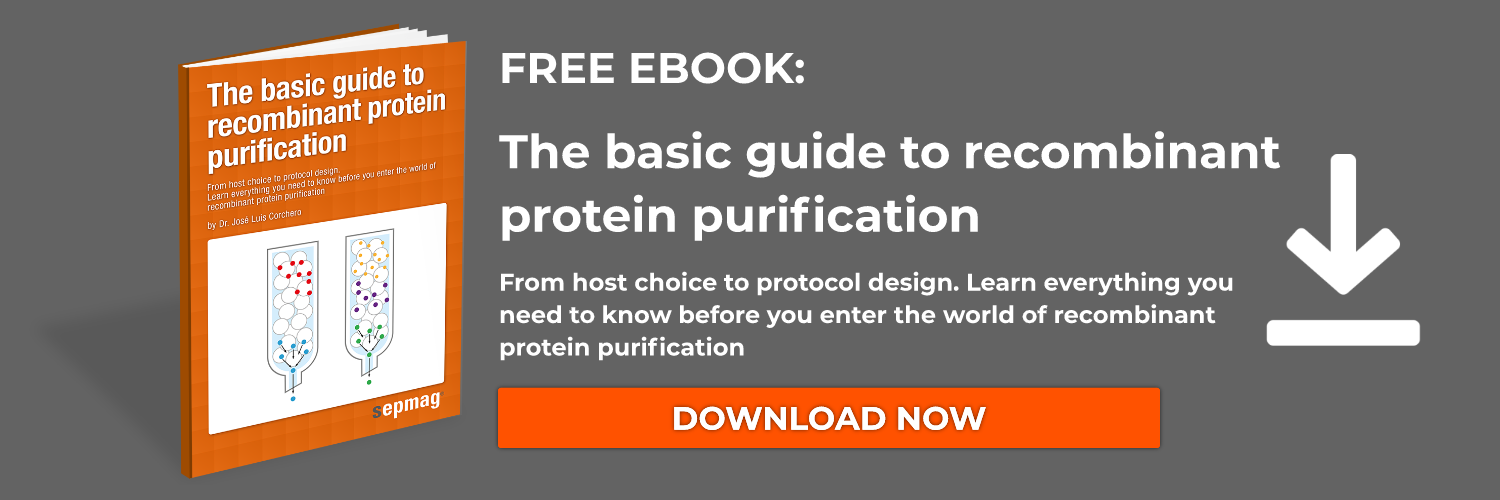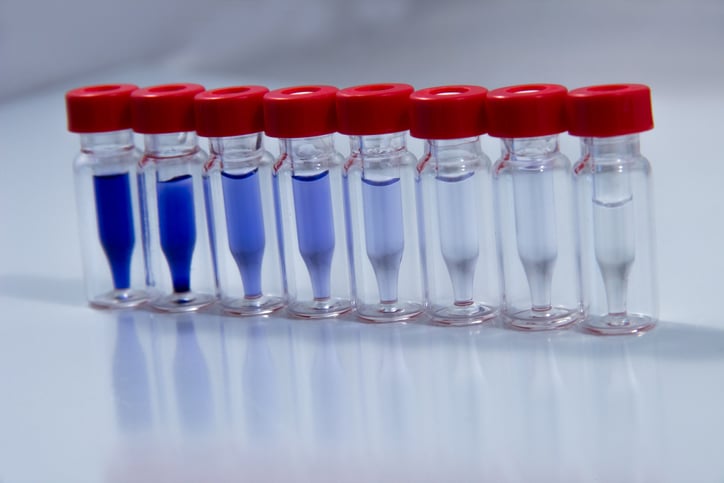Antibodies are a key component to many biotechnical applications. They are most often used for immunoassays such as ELISA, cell and tissue staining, protein quantification such as western blot, and cutting edge sensor development. Verified antibodies are easily purchased from commercial vendors. These antibodies can be monoclonal or polyclonal, and can come as a lyophilized powder or as a premixed solution. All of these details must be considered when choosing which antibody to purchase because they all have an effect on the antibody concentration and dilution process.
Why antibody dilution is necessary
The importance of antibody dilution is obvious in staining applications because there is significant background staining when the antibody concentration is too high. If there is too much background then the quality of the stain is poor and results in images that are difficult to analyze. An ideal antibody concentration gives a strong specific signal with minimal background; this also provides the best signal to noise ratio. This concept is best understood in staining because it is attended by a visual representation, but it also applies to immunoassays, protein quantification, and sensing because we always want to increase the signal and decrease the noise.
Antibodies bind antigen via non-covalent interactions in three dimensional “pockets” that are often charge-based and/or hydrophobic; the paratope of the antibody recognizes the epitope of the antigen. Background staining and non-specific binding is also mediated by charge and hydrophobicity, but it occurs between locations other than the paratope and epitope. In most cases the binding kinetics between an antibody paratope and an antigen eptitope are favored over non-specific interactions. Therefore, the purpose of antibody dilution is to find an optimal concentration in which binding with the antigen is optimized while non-specific interactions with surrounding proteins or surfaces are minimized. Knowing the optimal antibody concentration is difficult when working with a new antibody-antigen pair, so it is always a good idea to try a handful of different antibody concentrations via an antibody dilution series. In this way the optimal antibody concentration is empirically derived.
A special note about polyclonal antibodies
Polyclonal antibodies can vary between batches so it can also be useful to repeat an antibody dilution series every time a new lot is opened. This is because polyclonal antibodies are derived from animal serum rather than tightly controlled cell lines. This inherently introduces variability between animals and between batches of isolated antibodies.
How to perform an antibody dilution series
All commercial antibodies are sold with detailed data sheets explaining the type of antibody, the concentration of the mixture, or the mass of the lyophilized powder. In the case of a lyophilized powder the data sheet will also provide information about the other components in the solution that it was isolated from. These other components are often salt buffers at a particular pH with other additives such as trehalose. The data sheet will provide reconstitution instructions, but these can be modified to fit your needs and application.
The antibody data sheet will also include recommended concentrations or dilutions for different applications such as western blot or ELISA. When performing an antibody dilution series for a particular application you want to include the recommended concentration plus two dilutions below that value and two dilutions about that value. For example, if a datasheet suggests using a 1:200 dilution you will want to prepare dilutions 1:50, 1:100, 1:200, 1:400, and 1:500.
How to prepare a 1:50 dilution
The 1:50 means that it will be one part fully concentrated antibody (the original concentration of the antibody that comes in liquid format, or the recommended reconstitution concentration of a lyophilized antibody) and 49 parts diluent. The diluent is usually a phosphate buffer or buffered saline at a particular pH with or without detergent. This ratio can be applied to different volumes depending on how much is needed. For example, if we need 200 μL of a 1:50 solution, then we will add 4 μL of antibody to 196 μL of diluent.
Since this process requires measuring very precise small volumes it is imperative that pipettors are calibrated regularly to ensure that 4 μL is actually μL. Additionally, it is crucial that proper pipetting technique is used to ensure that volumes are as accurate as possible.
Uses and purification of antibodies
Antibodies have many uses in research and clinical settings. Their ability to specifically bind to epitopes makes them useful as probes in immunoassays. We mention an immunoassay earlier in the article called an “ELISA”, an enzyme-linked immunoassay. These assays involved antibodies as both probes and as an assay output signal. As a probe, antibodies can be bound to ELISA plate wells. Molecules of interest in solution are pipetted into the wells and given time to bind to the antibodies. Antibodies are also used as reporters when they are pre-conjugated to an enzyme. Substrate for the enzyme is added to the wells and the enzyme produces some measurable activity, such as color, which can be detected and measured. You can read more about these types of assays in our articles "different types of immunoassays" or "immunoassay kits".
Antibodies can be purified by column or magnetic bead methods. For example, magnetic beads can be pre-conjugated with protein A or protein G. These proteins bind immunoglobulins. You choose which protein to use based on the organism you are working with and which immunoglobulin subtype you want to purify. Magnetic beads are mixed with the solution you want to purify antibodies from. You can place the solution vessel in a magnetic rack and then you can wash the beads and reconstitute them in an elution buffer. You can read more about these methods in our article "antibody purification" or this article about “purification with protein A”.

Related news
- Co-ip protocol: Co-immunoprecipitation
- Synthesis of fluorescent nanoparticles for bioimaging
- Protein Purification Methods




